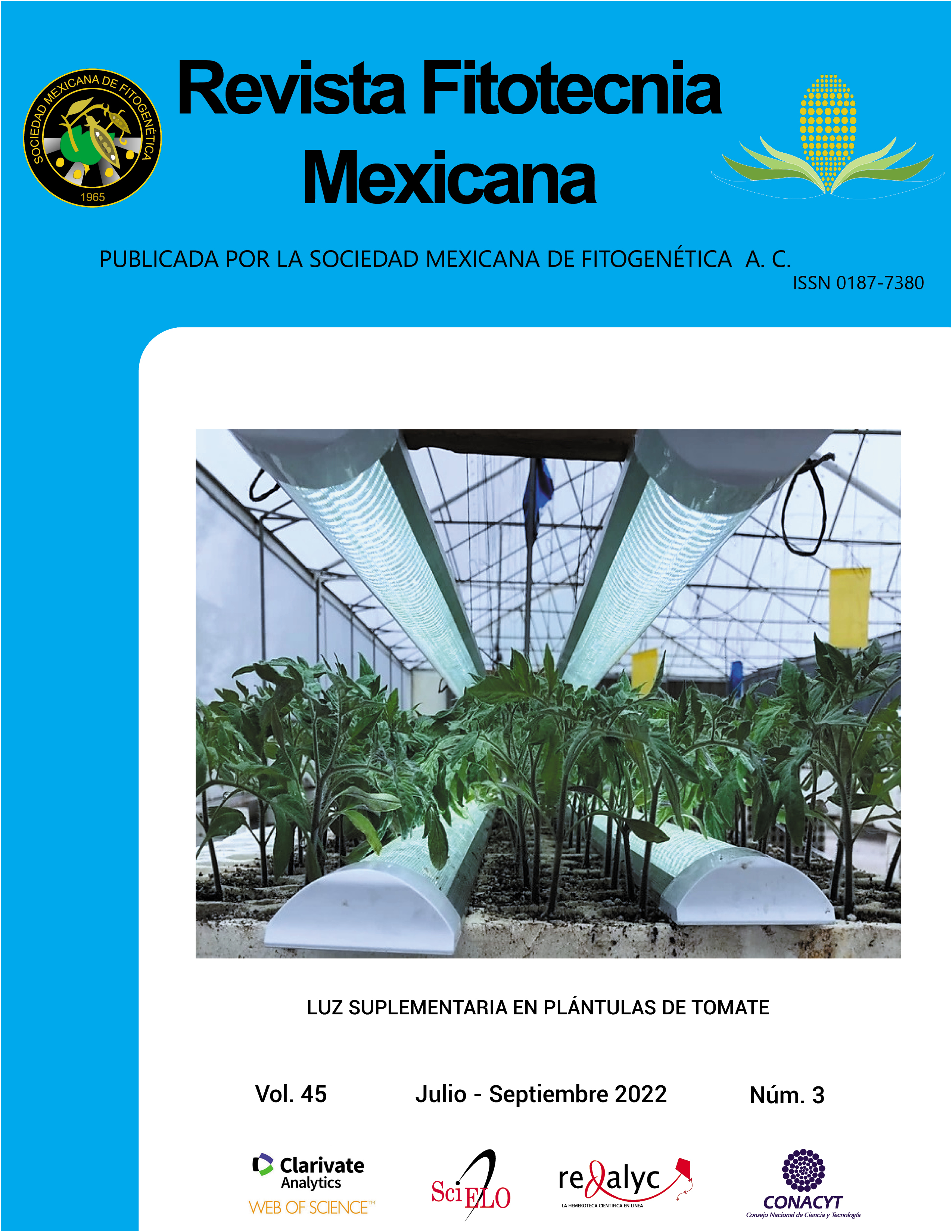EFFECTS OF SUPPLEMENTARY LIGHT APPLIED IN TOMATO SEEDLINGS
Main Article Content
Abstract
At Chapingo Autonomous University research has been done to develop a special greenhouse tomato production system capable of shortening the crop cycle from transplant to final harvest to less than 90 days; thus, achieving up to four production cycles per year. This system implies to delay the transplant age until 60 days after sowing (das) and decapitation of plants just above the third inflorescence. The objective of this study was to evaluate the effects of the application of supplementary light on tomato seedlings growing in trays with cavities of 250 cm3 on morphological traits that help to delay the transplant age until 60 das without subsequent negative effects on plant yield. Ten treatments that resulted from the combination of three light lamps locations (top, bottom and in both canopy positions) and three application periods (day, night and day plus night), plus a control without application were compared. Supplemental light was supplied with cool white-light LED lamps with a photosynthetic photon flux of 100 µmol m-2 s-1 at a distance of 20 cm. A randomized complete block design with four replications was used with a factorial arrangement of treatments, using a group of 16 seedlings as the experimental unit. It was found that supplementary light, applied during the day and from inside the canopy, reduced plant height and leaf area of seedlings, but did not increase the number of flowers or the yield per plant relative to the control. With transplant at 60 das, the cultivation in the greenhouse took only 85 days, which makes it possible to grow four cycles per year and increase the yield compared to other intensive greenhouse tomato production systems.

